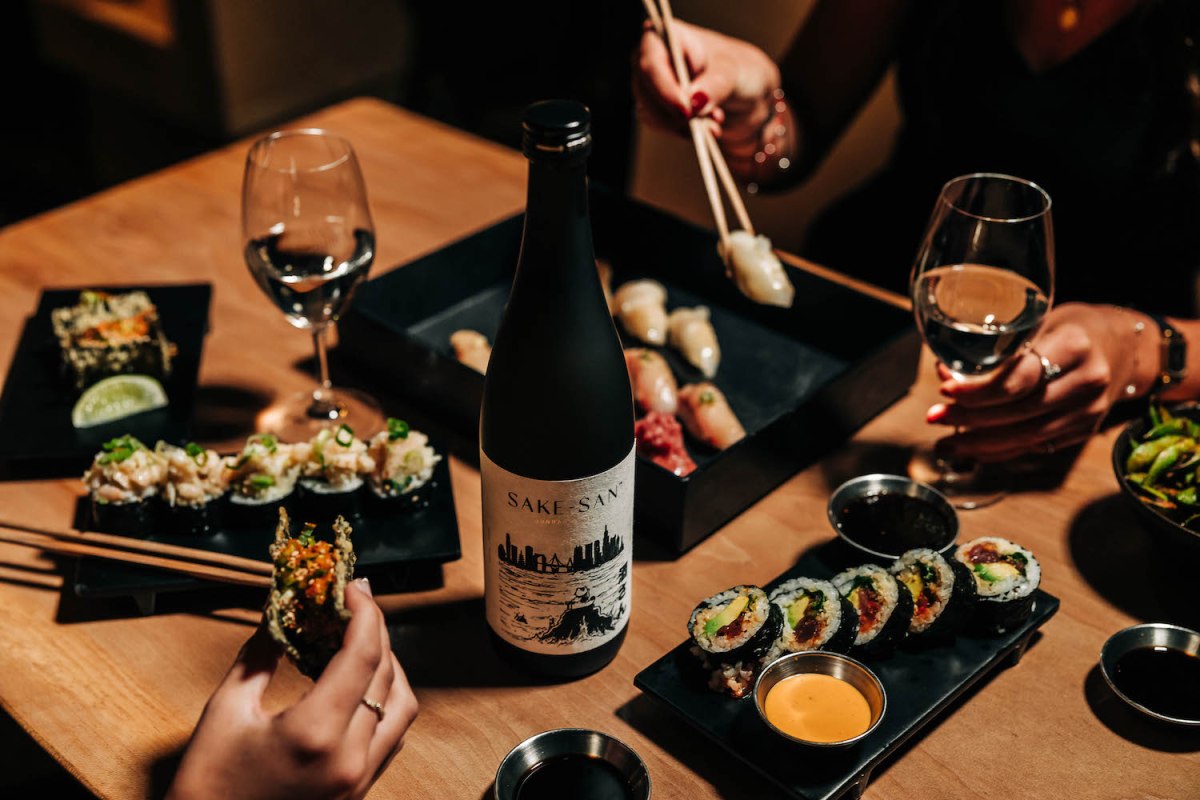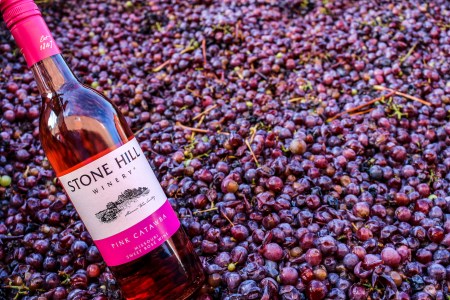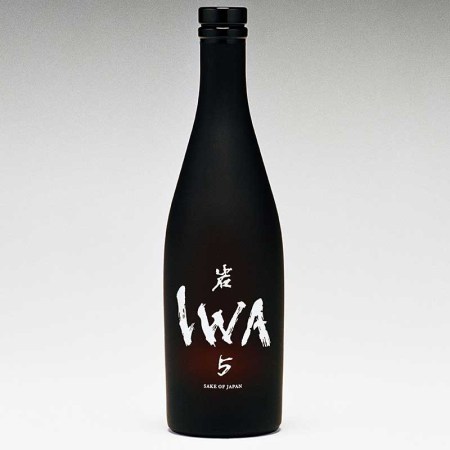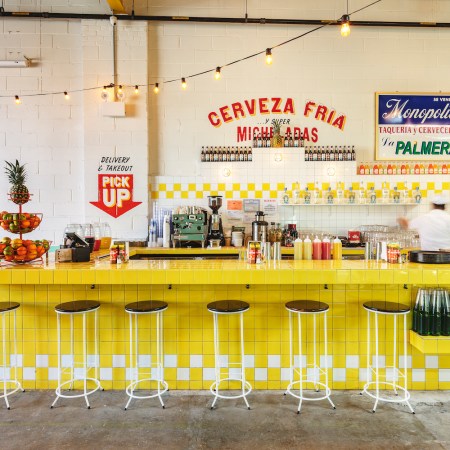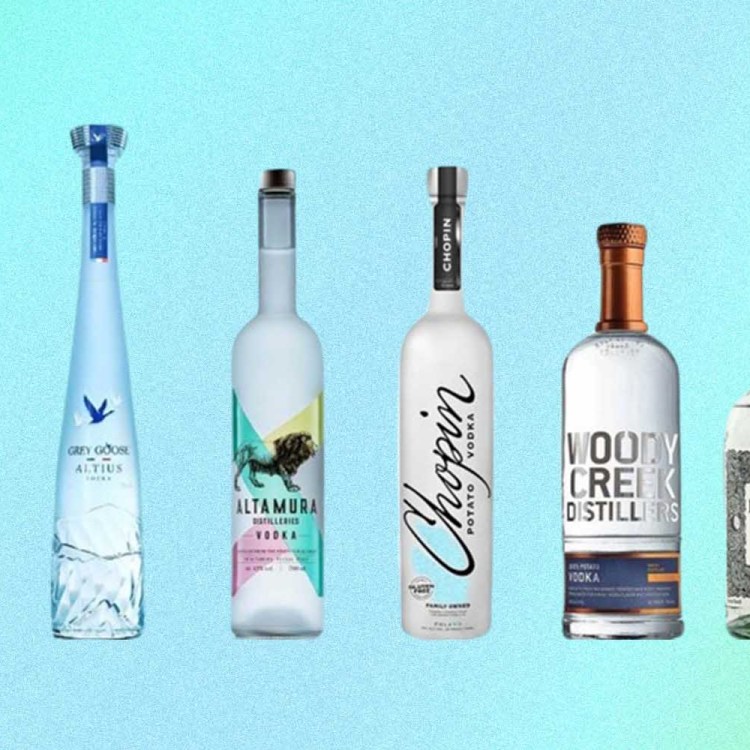“The words ‘I want to be a sake sommelier’ have never crossed my mind,” says Daniel Bennett. But the native Iowan, raised in central Illinois, has nevertheless become not only just that, but also the co-creator of a private label sake, Sake-san, bringing masterful, Osaka-brewed sake to Chicago. Bennett’s love affair with the Japanese rice wine is the fruit of 15 years in the Japanese food and beverage world. Encouraged by chefs with whom he’s collaborated at spots like Azumi at the Four Seasons Baltimore or Japonais by Marimoto in Chicago — not to mention mentors such as Eric Swanson and John Gaunter — Bennett earned his Sake Professional Certification in 2016.
For those who don’t spend much time in izakayas or sake bars, sake may hold far more mystery than wine or beer. But sake is growing in popularity nationwide, with Japanese exports more than doubling from 14 million liters a year to almost 36 million from 2012 to 2022. “Sake is definitely having its moment, in part because drinkers are more comfortable than ever to try new experiences,” Bennett says.
And that holds particularly true in Chicago. “Midwesterners are a social bunch, and sake culture is based around bringing people together over a drink or two,” he says. “So it was just a matter of time before the two found each other.”
And the conviviality innate in sake drinking is just part of the allure. Chicago’s connection to the city of Osaka are inscribed on the local landscape, with the Japanese Garden at Jefferson Park being modeled after Osaka for the 1893 World’s Fair. And because both are great food cities — known specifically for richer, heartier cuisines — sake seemed like the perfect addition to the local drinking culture. “Chicagoans’ favorite drinks are crisp, light, refreshing,” Bennett says, citing PBR and sauvignon blanc but also gin and tequila. “In Japan, as the food capital of the nation, the city of Osaka is in the exact same spot.”
Swap That French Wine for a Hardy American Catawba
Chicago restaurants and Midwestern wineries are embracing homegrown grapes, for their sustainability and tasteDespite the years he’s spent honing his expertise, the barrier to entry when it comes to appreciating sake is low, according to Bennett. “For my part as a somm and educator, I try to buck the idea that you need some pre-existing knowledge of sake to have a seat at the table,” he says. Of course, it helps if you can decode the menu, something he says is relatively simple with the right vocabulary. Here is Bennett’s sake guide for the most popular styles.
Where to Start
First off, most sake menus will boast three main categories of sake, each of which is further subdivided into two sub-categories. Think of the first category as the “bold and classic” with a totally approachable price point. Within this greater category, honjozo is crisp and refreshing, “like a gin or the smoothest vodka you’ll ever have.” Junmai, meanwhile, which translates to “rice and water only,” is “is rich and round,” according to Bennett. “It’s the pinot noir or bourbon of the sake world. Junmai pairs particularly well with the assertive, rich flavors of tempura, Wagyu or bincho coal-roasted dishes, which Bennett says “beg for the bold, rich, round flavors of junmai.”
Junmai is also the sake style you’re most likely to enjoy slightly warmed. Heating sake, Bennett explains, is a long-held, highly-specific tradition. “There are roughly 11 temperatures to serve sake at,” he says. “Many are poetically named: snow, flower, body, etc. Heating it puts an exclamation mark on the most pronounced flavors in that sake at room temperature.” Junmai, with its baking spice notes of vanilla, clove or nutmeg, is set at an advantage when warmed to about 100° F, perfect for a chilly winter Chicago evening and a particularly beautiful pair with baklava.
Daiginjo and Junmai Daiginjo
The next category encompasses daiginjo and junmai daiginjo, “the most luxurious, silken and gentle of sake categories.” It’s also the most expensive. “Lovers of French whites will be pleased,” he says of these sakes, which boast floral aromas and notes of unripe cantaloupe or green apple. They’re perfect as an aperitif, and they also pair beautifully with delicate dishes like sashimi. These sakes — like most premium brews — are typically served chilled.
“As opposed to heating, which accentuates the sake’s natural room temperature flavors, chilling suppresses the most boisterous notes,” he says. “This means that the floral component of the junmai daiginjo is still there, but it allows the subtle golden apple and yuzu peel notes to be heard.” If you heat them, “you’re going to be drinking a glass of hot flower-water.”
Ginjo and Junmai Ginjo
Last but not least, you have ginjo and junmai ginjo, Bennett’s “first love” in the world of sake. “When in doubt, start here,” he says. “It is the Goldilocks category, with a flavor profile between junmai and daiginjo — and priced accordingly.” Flavor-wise, ginjos are known for expressive tropical or orchard fruit notes, making them an excellent pair with “any cuisine you throw at it,” Bennett says.
Special Styles
Within these three major stylistic categories, there are several “special” styles adopted by the brewer, which will be indicated on the menu. Nigori, for example, is a cloudier brew, retaining some of the super-fine rice particles in the finished product. “Cloudy sake — nigori — gets pegged as not a serious sake for beginners,” Bennett says. “But the creamy texture that hides the alcohol’s bite makes it a go-to for Southeast Asian spicy dishes.”
Yamahai and kimoto see the brewer using natural, ancestral techniques to incorporate lactic acid bacteria into the sake. In the case of the latter, this is done by repetitively ramming the sake with poles, often to the beat of a song. Either technique creates a mellow, brioche-like layer to the finished sake, which Bennett compares to Champagne aged on lees or a buttery chardonnay. “A Japanese delicacy, uni or sea urchin roe, takes on a whole new dimension with a glass of yamahai or kimoto,” he says. “The yogurt parfait quality matches the sweet-salinity of the crab.” He also loves to pair them with Dungeness crab legs.
Funky, aged koshu, meanwhile, is pretty intense and wholly unique. “It is wildly different from all other sake,” he says. “Sipped on its own, [it] could make a Scotch drinker wince.” That said, he says it’s perfect for accompanying rich, fatty foods like Wagyu and tonkatsu.
If a low price point is your main concern, you’ll likely encounter futsushu, a category of mass-produced table sake that Bennett says shouldn’t be overlooked. “Futsushu makes up around 80% of all sake produced worldwide,” he say. “You can order as many rounds as you like and not worry about sticker shock when the bill comes.”
How to Drink Sake
Once you’ve ordered, there are a few rules of etiquette to bear in mind.
“If you’re going izakaya- (pub-) hopping with friends, the biggest faux-pas you can do is to refill your own glass,” he says. “Sipping sake is a social act, so just remember, ‘pour for others, never thyself!’”
But above all, the best advice he offers is “never pass up a glass of sake when it presents itself. Building a vocabulary and hearing personal stories about how the sake is made is an invaluable resource, and one that can be done at any pace.”
Join America's Fastest Growing Spirits Newsletter THE SPILL. Unlock all the reviews, recipes and revelry — and get 15% off award-winning La Tierra de Acre Mezcal.
